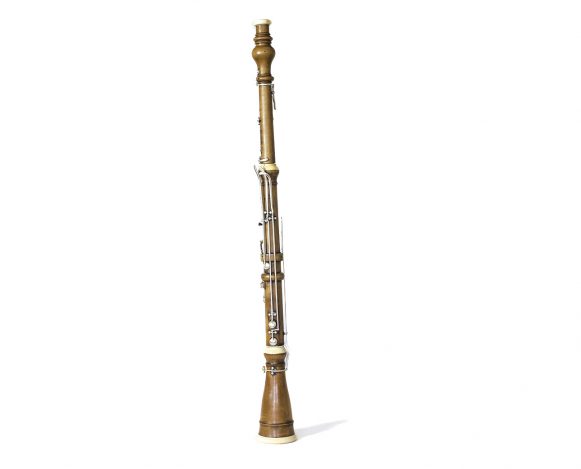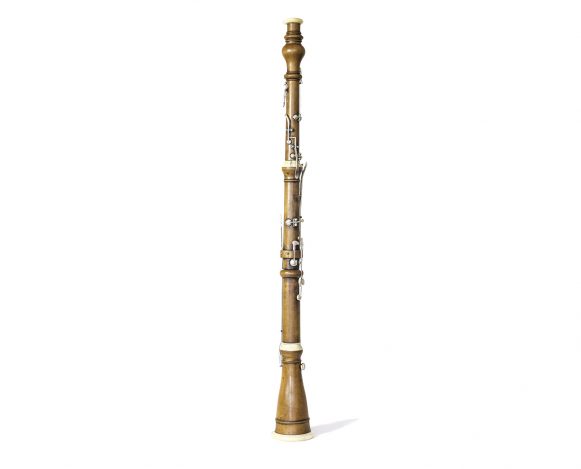





Ebony made instrument, with conic tube, played with a double reed. It has three sections: upper junction (including the reed compartment), lower junction and the bell (not so wide). Between the sections and on the lower end of the bell there are white wood rings. The mechanism is formed by six holes and twelve keys. The instrument is not transposing, and its range goes from B Flat5 to A5. The museum’s specimen does not have a reed.
The oboe probably originated from the development of the shawm and the hautbois. There is great historical proximity between these two latter instruments. The term “hautbois” means high wood, long or hard, and was applied in France and in England to various small shawms. The shawm is a wooden instrument with conic tube, six holes and no keys, played with a double reed; the latter is fixed to a kind of disk positioned on the instrument’s upper end, called the pirouette. There are still many controversies regarding the shawm’s evolution into the oboe, probably the changes occurred on the shawm during the 17th century gave birth to a new instrument called the hautbois, with two or three keys and a two octave range. The hautbois has gone through various modifications, such as the narrowing of the tube, the holes have become smaller and in the beginning of the 19th century, eight keys were added. In the middle of the 19th century, the hautbois has been structured in a manner very similar to that of the oboe that we know now, and still in this same century, Josef Sellner created an oboe with thirteen keys. This museum’s specimen is from the end of the Baroque period.
BERKLEY, 2009.
BETHENCOURT; BORDAS; CANO; CARVAJAL; SOUZA; DIAS; LUENGO; PALACIUS; PIQUER, ROCHA, RODRIGUEZ; RUBIALES; RUIZ, 2012.
Consulting Thiago Neves (2014).
DOURADO, 2004.
SADIE, 1994.
BRANDÃO, 2013.
ROLLA, 1974.
SOARES, 1990.
YOUTUBE, 2014.






